Self Employed: Solo 401k or SEP IRA?
According to a Gallup study at the end of 2019, almost 30% of Americans were self-employed. Entrepreneurs and self-employed individuals usually focus solely on expanding their business and increasing their bottom line. It can be easy for them to get distracted and not take time to focus on additional ways to plan for themselves and their families in retirement outside of the business. But retirement planning should be something that is discussed with a financial advisor, CPA and eventually a payroll company even while you’re still growing a business. Usually self-employed individuals have the option of either a solo 401k or a Single Employee Pension (SEP) IRA.
There are many questions to ask in order to determine when to open a retirement plan for a new business. Usually, self-employed individuals have the option of either a solo 401k or SEP IRA. Which one is best can depend on certain factors and raise several questions including:
- How is your company incorporated?
- Is your business an LLC, S-Corp, etc.?
- Do you have any 1099 or W2 employees?
- Are you taking larger draws from business and less from your salary?
These factors all affect personal and business taxes as well as the amount you can save for retirement and your future self. They can also determine which vehicles will help you reduce your tax liability.
Do you have any W-2 or 1099 employees?
Let’s break this down a little. Do you have W-2 or any 1099 employees? An S-Corp has to have SEP contributions run through a W-2 while an LLC pays self-employment tax on net earnings, so no W-2 is needed. SEP IRAs are not a pensions or a defined benefit like it sounds. It is similar to a solo 401k with options to defer income to grow tax deferred with a few distinct differences.
Contribution limits
The SEP contribution is made through the employer and not the employee. You start by determining gross income, then subtracting expenses, followed by subtracting half of self-employment tax. For 2021, limits are the lesser of 25% of an employee’s compensation or $58,000. Solo 401k contributions comes from both the employee and the employer. The employee has the option to make contributions of up to $19,500 and then the remainder can come from employer matching and profit sharing. It also allows a $6,500 catch-up for those over 50, allowing for a total of $64,500 overall. Another feature of a solo 401k is it allows Roth contributions as well certain loan provisions. SEP IRAs should be established before filing a tax return on April 15th of the following year, but employee contributions to solo 401ks need to be made by December 31st of the calendar year.
Reporting and Accounting
There are also differences in reporting and accounting. SEP is easier to set up with little filing and paperwork required while the solo 401k can be a little more stringent with accounting. Also, you need to think ahead and consider if you plan to bring other employees on board or if this will just be covering yourself. If there is possibility of adding employees during growth, you should choose a SEP IRA, as a Solo 401k can only be contributed to by the owner and the spouse of owner working at the company.
Regardless of what plan you decide to go with, a quick discussion with an advisor of the pros and cons between these options can determine what is most suitable. As mentioned, once you’ve decided which option to go with, they are fairly simple to maintain and contribute to with a qualified CPA and payroll company. After this plan is established, business owners should then focus on investing in low-cost options and diversify through a portfolio of ETFs across various longer-term healthy asset classes. Contributing not only helps reduce tax liability but also helps grow your nest egg and improve your probability of retiring successfully within your financial plan.
Matthews Barnett, CFP®, ChFC®, CLU®
Financial Planning Specialist
Share This Story, Choose Your Platform!
Wiser Wealth Management, Inc (“Wiser Wealth”) is a registered investment adviser with the U.S. Securities and Exchange Commission (SEC). As a registered investment adviser, Wiser Wealth and its employees are subject to various rules, filings, and requirements. You can visit the SEC’s website here to obtain further information on our firm or investment adviser’s registration.
Wiser Wealth’s website provides general information regarding our business along with access to additional investment related information, various financial calculators, and external / third party links. Material presented on this website is believed to be from reliable sources and is meant for informational purposes only. Wiser Wealth does not endorse or accept responsibility for the content of any third-party website and is not affiliated with any third-party website or social media page. Wiser Wealth does not expressly or implicitly adopt or endorse any of the expressions, opinions or content posted by third party websites or on social media pages. While Wiser Wealth uses reasonable efforts to obtain information from sources it believes to be reliable, we make no representation that the information or opinions contained in our publications are accurate, reliable, or complete.
To the extent that you utilize any financial calculators or links in our website, you acknowledge and understand that the information provided to you should not be construed as personal investment advice from Wiser Wealth or any of its investment professionals. Advice provided by Wiser Wealth is given only within the context of our contractual agreement with the client. Wiser Wealth does not offer legal, accounting or tax advice. Consult your own attorney, accountant, and other professionals for these services.





